As an Amazon Associate, I earn from qualifying purchases.
Learn all about freezing tomatoes to preserve the amazing star of summer produce. A freezer stash of frozen tomatoes opens the door to amazing and speedy meals.
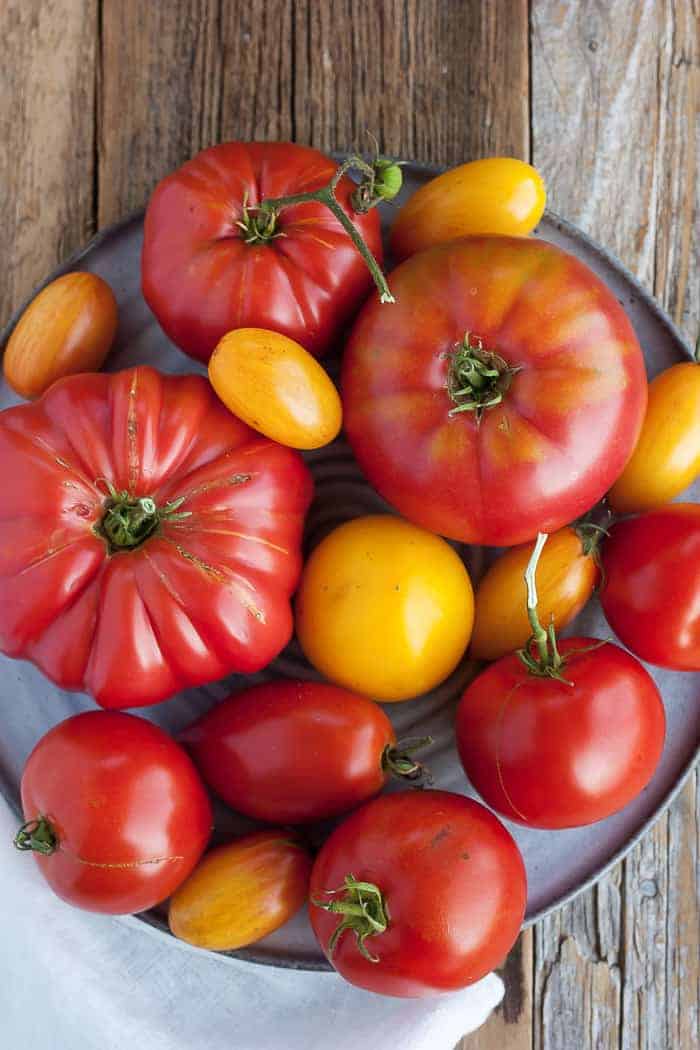
Do you have a glut of amazing fresh tomatoes in your kitchen?
The good news is that easiest way to preserve tomatoes is through freezing. Lucky for you, freezing tomatoes couldn’t be easier. Let’s tackle tomato season together!
There are both pros and cons of freezing tomatoes. Pros: it’s SO easy! You won’t need any special equipment or need to know any canning skills. Cons: you’ll need space in the freezer both to freeze them and store them. And frozen tomatoes aren’t suitable for use in all cooking situations.
In this tutorial, I’ll walk you through four different ways of freezing fresh tomatoes:
- Freezing whole tomatoes – both peeled and unpeeled
- Freezing tomato sauce and spaghetti sauce
- Freezing tomato paste
- Freezing stewed tomatoes
If you end up running out of freezer space and still have more tomatoes to preserve, check out our tutorial on Dehydrating Tomatoes for a shelf-stable option.
How to Freeze Whole Tomatoes
How to Freeze Whole Tomatoes Without Peeling
Start with clean and dry tomatoes. If you’d like, you can use a paring knife and core the stem end of the tomato.
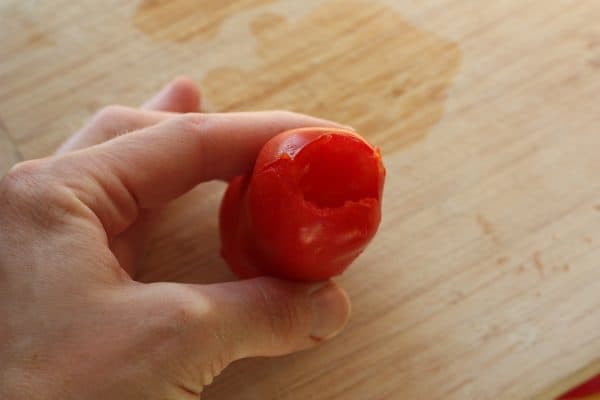
This step is not necessary but will make the frozen tomatoes more versatile to use after they have been thawed.
Line a rimmed baking sheet with parchment and place the tomatoes on the baking sheet with enough space so they’re not touching, and freeze for 4 hours.
Break apart any tomatoes that may have stuck together and transfer them to freezer-proof storage.
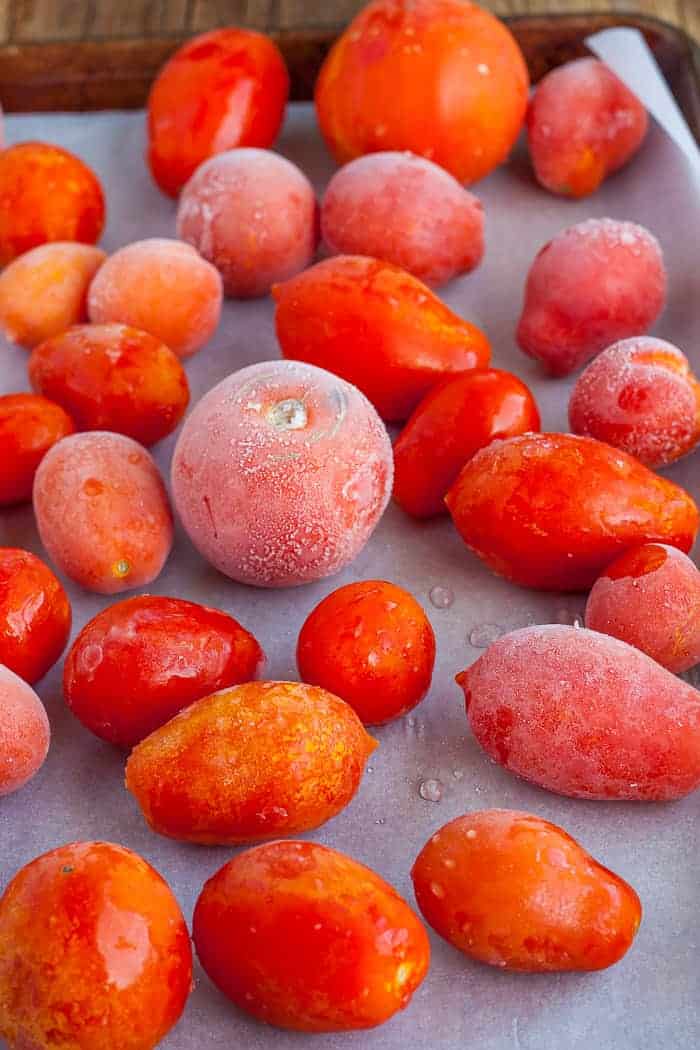
Freezing Peeled Whole Tomatoes
Peeling tomatoes to freeze is an extra step, but will only add about 10 minutes to the process. And the good news is, it’s super easy. For more in-depth info into the process, check out our post on How to Blanch and Peel Tomatoes.
In a large mixing bowl combine water and ice. Next up, bring a large pot of water to a boil on the stove.
Using a paring knife, remove the stem/core from the tomatoes – OR – cut an “x” on the bottom of the tomato.
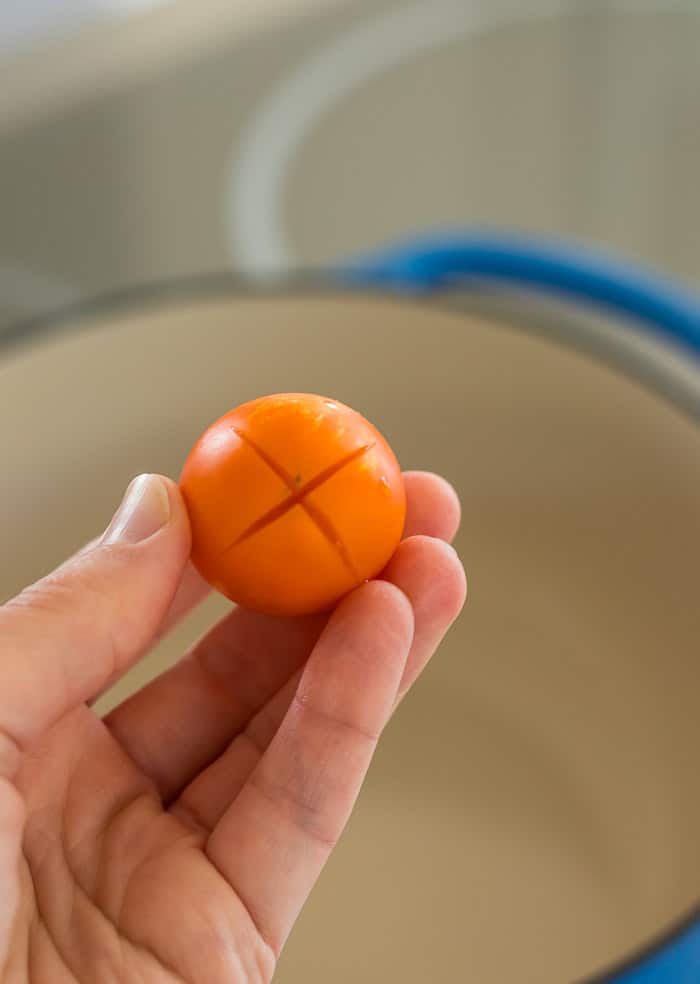
Add the tomatoes to a pot of boiling water and boil them until you see the skins start to come off (about 1-2 minutes). Use a slotted spoon and remove the tomatoes and place in the ice water.
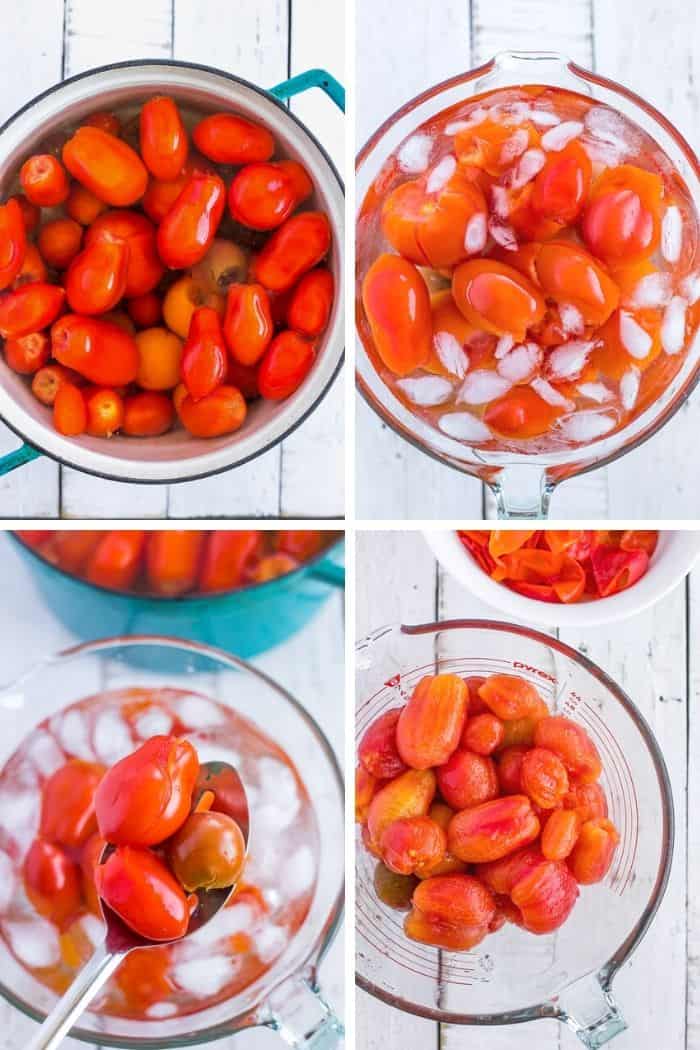
Working with the tomatoes one at a time, remove any skin that hasn’t already slipped off. Once they are peeled you can slice the tomatoes in half (to remove all the seeds) or leave them whole. I like to place the peeled tomatoes in a strainer for a few minutes to drain any additional water.
Line a rimmed baking sheet with parchment and place the tomatoes on the baking sheet with enough space so they’re not touching, and freeze for 4 hours.
Break apart any tomatoes that may have stuck together and transfer them to freezer-proof storage.
And the best part about peeling tomatoes before freezing them? Set the peels aside to dehydrate later to make into homemade tomato powder. Tomato powder is an amazing flavor booster for rice, soups, and stews.
How to Freeze Tomato Sauce and Spaghetti Sauce
If you have leftover canned or homemade tomato sauce or spaghetti sauce, freeze the extras for later!
Freezing tomato sauce in easy-to-use portions gives you the most flexibility for cooking. Most store-bought cans of tomato sauce are 14-15 oz, which translates to ~1.5-2 cups.
If the tomato sauce is warm, allow it to fully cool before freezing. This will prevent it from becoming icy in the freezer. Transfer the sauce to freezer-safe containers.
I love using 1/2-cup Souper Cubes, 1-cup Souper Cubes, and 2-cup Souper Cubes. Once frozen, I transfer the cubes of tomato sauce to reusable freezer bags. You can also use plastic freezer bags, plastic containers, or canning jars.
To freeze tomato sauce in canning jars, use only wide-mouth jars. Allow for 1 inch of headspace, which is the space between the top of the food and the top of the jar. This gives the sauce room to expand as it freezes.
To use tomato sauce frozen in canning jars, do not thaw the cold jars in hot water or the microwave. This can lead to cracking. Instead, allow it to sit at room temperature on the counter for a few hours, or overnight in the fridge.
If you need inspiration, check out my recipes for Crockpot Spaghetti Sauce and Cherry Tomato Sauce, which use fresh tomatoes, and Freezer Spaghetti Sauce which uses canned diced tomatoes and canned tomato sauce.
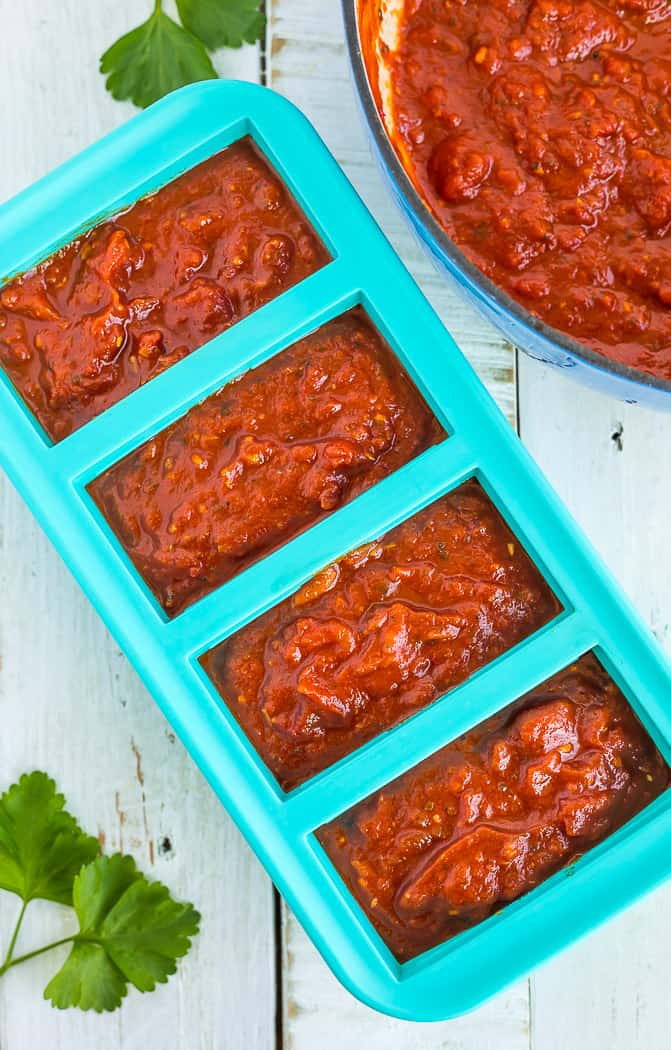
How to Freeze Tomato Paste
Most store-bought cans of tomato paste are 6 oz, which translates to ~1/2-3/4 of a cup. The 2-Tbsp Souper Cubes, 1/2 cup Souper Cubes, or 1-cup Souper Cubes are perfect for smaller portions of freezing tomato paste.
You can also freeze in small plastic freezer bags or even “dollops” of tomato paste frozen on parchment. Line a baking sheet with parchment and spoon tomato paste onto the parchment. Freeze for 2-3 hours and then remove the individual portions of frozen paste to freezer bags.
Use tomato paste in recipes like Creamy Instant Pot Tortellini Soup and Sugar-Free Barbeque Sauce.
How to Freeze Stewed Tomatoes
If you have leftover canned or homemade stewed tomatoes, freeze the extras in easy-to-use portions. You can check out my tutorial on Canning Stewed Tomatoes for step-by-step instructions on how to make this tasty ingredient.
Most store-bought cans of stewed are 14-15 oz, which translates to ~1.5-2 cups. Similar to the process of freezing tomato sauce, allow the stewed tomatoes to fully cool before freezing.
Transfer cooled stewed tomatoes to your favorite freezer containers, including any juices that have accumulated in the stewing process.
How to Store Frozen Tomatoes
Whole tomatoes are best stored in freezer-safe bags with any extra air removed.
Tomato sauce, spaghetti sauce, and stewed tomatoes are best stored in 1/2-2-cup portions in wide-mouth canning jars or freezer-safe bags.
Tomato paste is best stored in smaller portions of 2-TBSP to 1/2 cups.
How Long Will Frozen Tomatoes Last?
Whole tomatoes, and portions of tomato sauce, spaghetti sauce, stewed tomatoes, and tomato paste will last for 6-9 months in the freezer.
You can prolong their life by making sure the tomatoes and tomato products are fully cooled before going into the freezer. This prevents ice from forming on them, leading to freezer burn which can impact the taste in the long run.


Get my Canning e-book!
It’s 51 pages of every helpful tip and trick you could want as a brand new canner, AND it includes 13 ad-free canning recipes that are designed to take you from novice to pro.
Freezing Tomatoes the Easy Way

Ingredients
- tomatoes
Instructions
Freezing Whole Tomatoes Without Peeling
- Line a rimmed baking sheet with a piece of parchment.
- Rinse and pat tomatoes dry.tomatoes
- Using a paring knife, remove the stem and core.
- Place tomatoes on the baking sheet with enough space so they're not touching, and freeze for 4 hours.
- Break apart any tomatoes that may have stuck together and transfer to freezer-proof storage.
Freezing Peeled Whole Tomatoes
- In a large mixing bowl combine water and ice.
- Bring a large pot of water to a boil on the stove.
- Using a paring knife, remove the stem/core from the tomatoes – OR – cut an “x” on the bottom of the tomato.
- Add the tomatoes to a pot of boiling water and boil them until you see the skins start to come off (about 1-2 minutes).
- Use a slotted spoon and remove the tomatoes and place in the ice water.
- Working with the cooled tomatoes one at a time, remove any skin that hasn’t already slipped off.
- Place the peeled tomatoes in a strainer for a few minutes to drain any additional water.
- Place tomatoes on the baking sheet with enough space so they're not touching, and freeze for 4 hours.
- Break apart any tomatoes that may have stuck together and transfer to freezer-proof storage.
Freezing Tomato Sauce or Spaghetti Sauce
- Allow tomato/spaghetti sauce to fully cool.
- Transfer sauce to freezer-safe containers. To freeze tomato sauce in canning jars, use only wide-mouth jars. Allow for 1 inch of headspace, which is the space between the top of the food and the top of the jar.
- Transfer containers to the freezer. Store for 6-9 months.
Freezing Tomato Paste
- Transfer cooled tomato paste to freezer-safe containers.
- You can also freeze in small plastic freezer bags or even “dollops” of tomato paste frozen on parchment.
- Line a baking sheet with parchment and spoon tomato paste onto the parchment. Freeze for 2-3 hours and then remove the individual portions of frozen paste to freezer bags.
Notes
- Freeze for 9-12 months.
- If you’d like to chop the tomatoes prior to freezing, store in smaller bags or 16 oz wide mouth canning jars (leave 1 inch of headspace).
- To use tomato sauce frozen in canning jars, do not thaw the cold jars in hot water or the microwave. This can lead to cracking. Instead, allow it to sit at room temperature on the counter for a few hours, or overnight in the fridge.
Nutrition
Nutrition information is automatically calculated, so should only be used as an approximation.

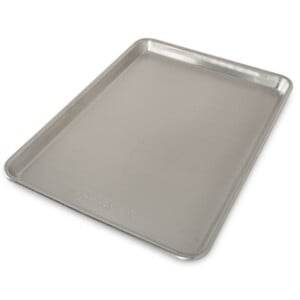
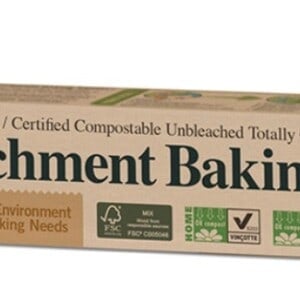




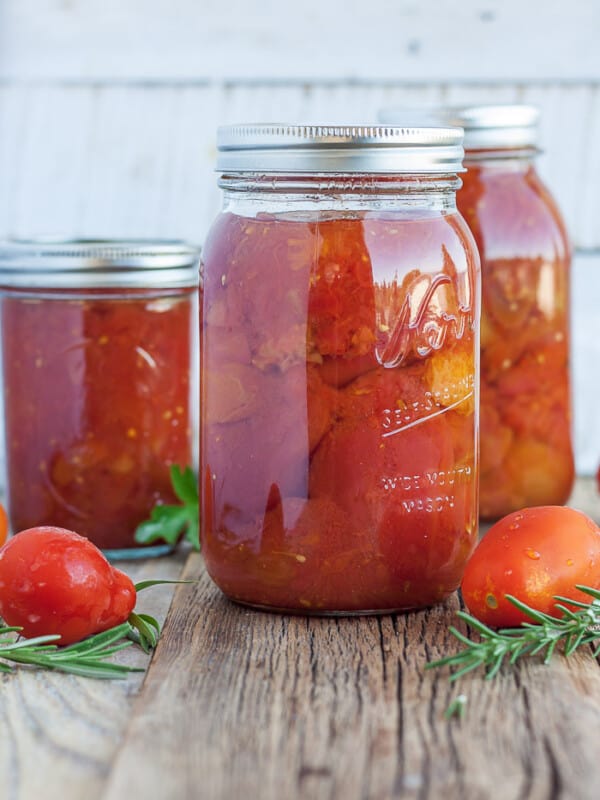
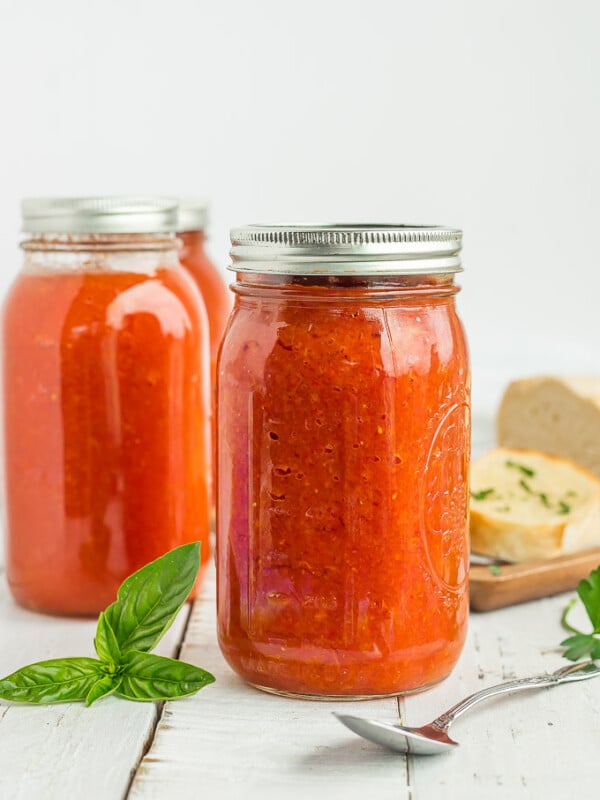
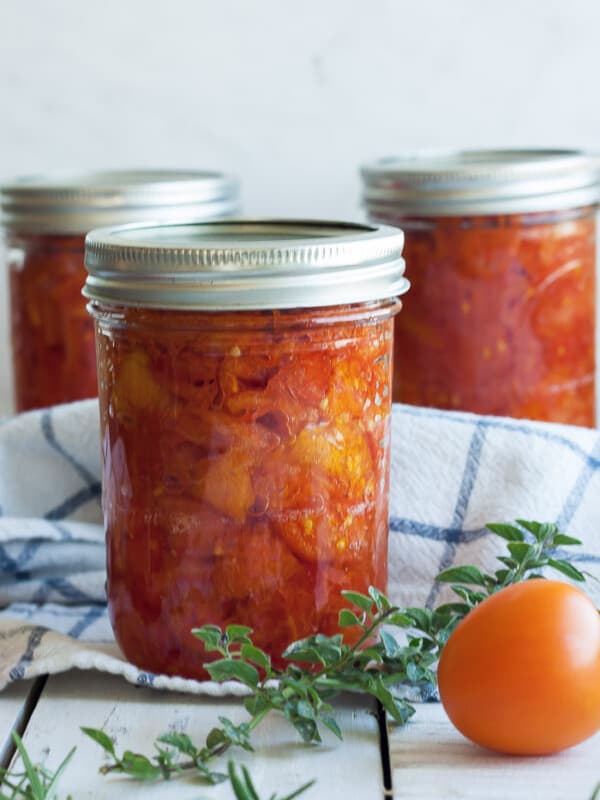
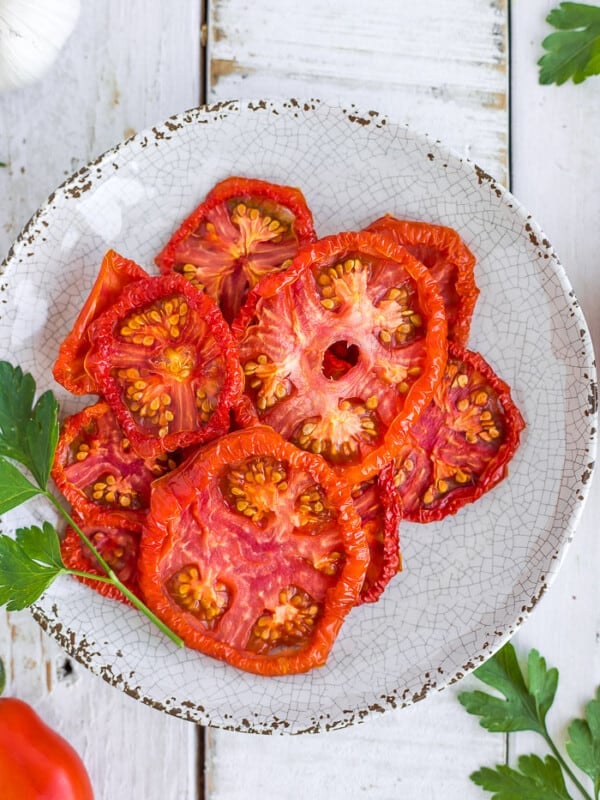
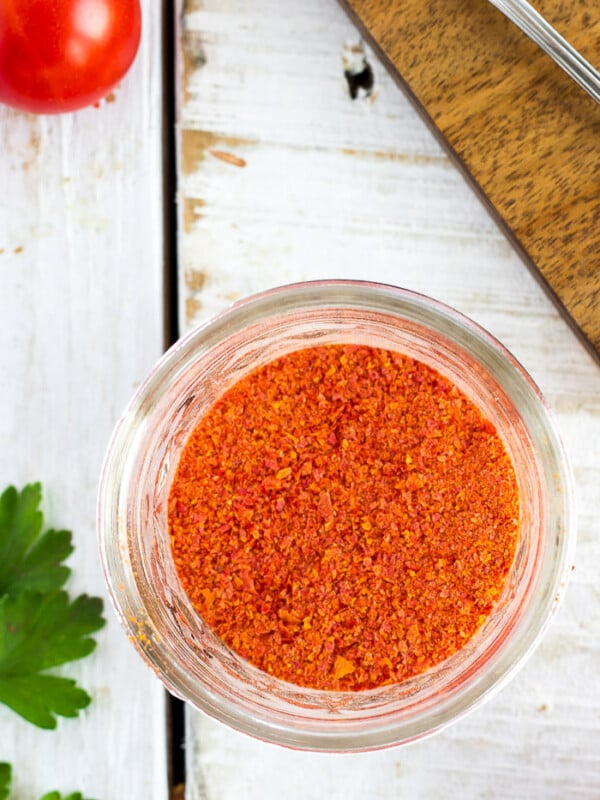







I wonder if you could just pop them into the freezer bag without flash freezing first. If the skins are dry, maybe they don’t stick to each other once frozen? Have you ever tried it? Thanks for all your great preserving instructions; next I’m going to check out how to freeze celery!
I have not had good luck with that but I’m usually freezing a lot at once. Maybe try with a small quantity first to see if it works for you. And then expand.